
Young dancers at ‘The World of Dance’
- Dr. S. D. Desai
e-mail: sureshmrudula@gmail.com
Photo credit: Anahita Sarabhai
April 10, 2015
The dancing couple Viraja Mandhre and Shyamjith Kiran with the
Kalakshetra signature on their distinctive Bharatanatyam
performances set a benchmark for the remaining seventeen young dancers
of varying classical forms to perform at Darpana Academy’s ‘The World of
Dance’ (April 1 to 6) in its 5th year at Natarani
(Ahmedabad). The initial invocation to Lord Gajanan was agreeably
in his lithe dancing form. Their ananda tandava with Shiva’s
recognizable mridanga, damaru and act of receiving the Ganga in his
jataa was a combination of nritta precision and nritya abhinaya
intricacy, perfectly in tune with the music. With a feel of
freedom, Viraja remained radiantly expressive and Shyamjith offered a
matching performance with control and dignity.
Slide show

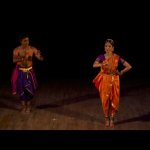
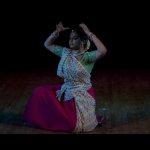
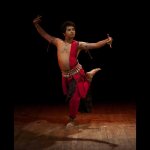
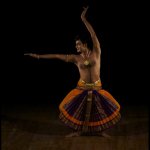
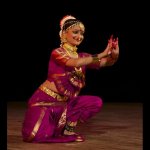
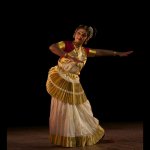
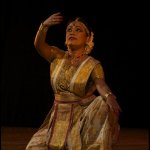
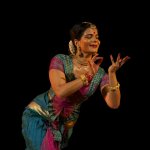
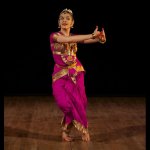
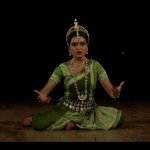
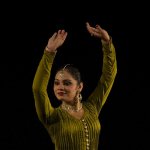
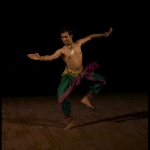
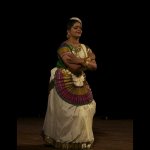
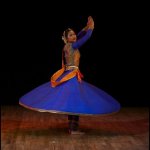
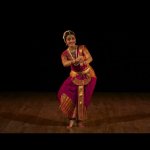
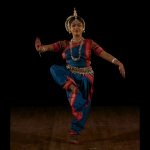
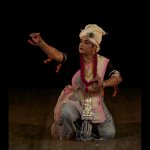
Bhakti anchored all three tiny Manipuri performances by Surajit Deb
Barma, who at a young age has been pursuing doctoral research studies in
his diligently followed art form. Remarkably, in this form, Jayadev’s
opening song in ‘Geeta Govinda’, in which he sings of the benevolent
power of Lord Krishna in madhura komala kanta padaavali , the
Hiranyakashipu-tanubhangam got demonstrated in a couple of seconds with
relatively soft action. Surajit visualized Krishna’s rasamaya roopa in
‘Krishna Roopa Varnam’ in the lasya style as in a conversation between
two sakhis. One with the delectable music, he combined rhythmic
movement, recognizable emotions and an engaging narrative.
Following Vinayaka Stuti, Tabashmi Pal, currently Guru Rajendra
Gangani’s disciple, moved on to Vilambit and then Drut Teen Tal, where
she was at her best. With ebullience lending grace, confidence and
composure, her precise traditional Kathak elements like paran, toda and
chakkars were pleasing. Instead of a tarana or thumri, Tabashmi
chose Meera Bhajan Hari tum haro... and, prompted by Draupadi’s name,
gave it a dramatic twist with building into her performance the Dyuta
episode, a couple of characters, including a limping Shakuni, and
vastraaharan. She was perfectly in sync with the rhythm but there was
more of dramatic than subtle Kathak abhinaya.
Fascinating
Ardhanareeshwar in Hinduism is a concept portraying Shiva, the male
energy, as inseparable and indistinguishable from Shakti, the female
counterpart of it, as the combined universal force that creates,
preserves with change and destroys for a fresh creation. On the second
day, Arnab Bandyopadhyay, a versatile dancer, Odissi disciple of Gurus
Kelucharan and Ratikant Mohapatra, and director of Darpani Dance Company
(Kolkata), brilliantly succeeded in giving through visual images,
glimpses of these amoorta divine forces permeating the universe. In this
creative exploratory interpretation through tandava and lasya, Odissi
with its inbuilt intricate bhangas becomes a convenient vehicle for the
gifted handsome dancer well versed in abhinaya.
Some of the young dancers at the Festival every year surprise by other
dimensions to their personality. On being told after Bharatanatyam
dancer Debaldev Jana’s opening performance that by profession he is a
brilliant mathematician, the young audience was quick to applaud the
fact. Such is the fascination the generation next has for classical
dance. The performance was a rare varnam in which the Virahotkantitha
Nayika, played by a male dancer, albeit more with physical action than
subtle facial expression, is seen sharing with her sakhi her longing for
a union with - not Krishna or any other lover but - the Lord of
Creation, Shiva! His tillana was on a Balamuralikrishna composition.
Formerly with Nartan (Ahmedabad) and now with Darpana, in impeccable
Kuchipudi aharya, Hemavati Shah with her brisk movement encompassing the
stage and endearing herself with sharp facial expression, gave a feel
of ripples on the surface of a large river in Bala Gopala Tarangam,
locally a popular piece, culminating in a slow dance on the brim of a
brass plate with diyas in hands and one on the head. In no small measure
did the Darpana vocalist Jayan Nair with ghatam, mridanga and flute in
support, all live, enhanced the liveliness of the performance of the
persevering petite girl emerging as a vivacious person through the
dancing skills she has been learning with devotion and passion!
A unifying force
For our classical nayikas, their sakhis used to be dependable
confidantes, who lent their ears, empathy and help even as they teased,
not to mention the vicarious pleasure probably they derived! Clad in a
striking combination of gold and white with relief in red, Vidya Pradeep
(Trivandrum) stood out as a good Mohiniattam dancer in the role of
Usha, demon king Banasura’s pretty daughter who sees in her dream a
handsome young man, which she confides to sakhi Chitralekha coyly and
with dignity. Chitralekha has her draw his picture, which she does with
images drawn from nature she first verbally describes to her. It’s
Aniruddha, who she brings in sound sleep to Usha. Usha’s love triumphs
and they unite in wedlock.
Dance, like any other art, is a unifying force for the nation. From
Kerala’s Mohiniattam, the Festival on the third day moved on to Assam’s
Sattriya. Anita Sharma, who has also learnt Odissi from Kelubabu, gave a
taste of her expressive felicity in Utho re mere laal Gopal as Yashoda
waking up Bal Krishna to the lines sung in a slow, mellow richness.
Gradually, the whole village is abuzz with sounds of folks carrying milk
on shoulders and on the head. Earlier, she did ‘Krishna Vandana’. The
style continuing for over five hundred years looks and sounds folksy in
its vocal rendering, instrumental music and the wavy regional Ulah and
other movements. Words like kandhe, maathe and doodh lo refreshingly
have affinity with Gujarati.
Divya Shiva Sundar, from the family of Bharatanatyam gurus the
Dhananjayans, entered with ‘Ananda Nartana Ganapati’ portraying the
joyously dancing Ganesh. Her central piece was Sakhi hey keshi mathana
mudaram, the famous Geeta Govinda song, in which Radha savours to her
sakhi the ecstatic time she had spent in revelry with the ‘sublime
tormentor’ Krishna. The technically flawless performance by a senior
Bharata Kalanjali member, excellently choreographed, gave the impression
that when done time and again a good lyrical piece leaves scope for
spontaneity. A hurried tillana was followed by Narasimh Mehta’s
Vaishnava Jana to tene kahiye... , which gave a literal visual
interpretation of the Bhajan.
Nritya and natya
An expressive visage, a dignified demeanour along with clear enunciation
of words of the lines on Lord Vakratunda clearly getting visually
interpreted held out expectations from Kuchipudi dancer Ananya Khosla
(New Delhi), disciple of the Raja, Radha and Kaushalya Reddy. With
understanding and grace, she joyfully turned to Balagopala Tarangam with
the lyric rendered different from the one heard a day ago and with
varying paadabheda. It was when she danced on the brim of a brass plate
that her dignified bearing, the symmetrical upper frame with shoulders
and expressions on the pretty face grew a bit vulnerable.
When a diminutive Rajashri Praharaj dances, she gradually attains the
height of a gifted Odissi dancer. A live wire on stage, with her
portrayals of Sita, Ram, Lakshman, Ravana and Jatayu besides birds and
deer with their essential traits, emotions and moods in the ‘Ramayana’
with Guru Ratikant Mahapatra’s training and direction so won the hearts
of the viewers that, as an exception in all these years of the Festival
they gave her a standing ovation. Her quicksilver changes in the
portrayals with characteristic gait, flowing curves, mukhabhinaya and
hasta mudras of her dance form showed her command of it. Raghunath
Panigrahi’s music and a clear rendering of the chopais enhanced the
beauty of the visualized dramatic narrative. The initial introduction
though need not have been so long.
Having had training in the Banaras Gharana, Nikita Banawalikar (Mumbai)
started taking occasional lessons in the Lucknow Gharana of Kathak from
Sanjukta Sinha, an accomplished Kadamb dancer. In her ‘Nrityanjali’,
interspersed with vibrant aamad (initial entry), toda, tukda (rhythmic
16-beat aavartan), paran (bols to rhythm), chakkars and the like to live
music, Nikita demonstrated her endearing skills. The lines (Ay re sakhi... in Prahar’s voice) came in between. Even with her brilliant footwork,
chakkars and all, interestingly while changing over to the courtly
Gharana, she is in the process of attaining its characteristic elegance
and intricate lyrical abhinaya. Barely twenty, and tenacious, she has
the time to learn them from the ‘young guru’ who excels in them!
The body is the medium
On the penultimate day, Kuchipudi came a third time and this time it was
performed by a slim but energetic male dancer Avijit Das (Bangalore),
who has the distinction of training earlier from Guru Vempati Chinna
Satyam and currently Manju Bharggavee - not to mention his Kalakshetra
background in Bharatanatyam. Beginning with ‘Ganesha Kautvam’, he turned
to Dashavatara on Lord Vishnu’s ten incarnations, for a change, from
the Sanskrit scholar and musician Telugu poet Narayana Teertha’s
celebrated Shri Krishna Leela Tarangini. The performance was remarkable
for its brisk tempo, expressive body language, rhythmic footwork and
varying facial expression keyed to the clearly enunciated poetic lines
and the music rendered with devotion.
Even within a slow tempo of music, Mohiniattam performer Shruthi K.P.
seemed disconcertingly subdued and languorous in her opening invocatory
piece. A technical initial problem, she later admitted offstage, had
disturbed her. It was in ‘Dundubhi’ choreographed by her, that she
gradually got into her element with the evenly flowing movement, in slow
motion or accelerated, in tune with delectably varying rhythmic sounds
of damaru. Visually offering praises to the sound, ubiquitous like air
even in silence, permeating the universe, is no mean endeavour and
Shruthi pretty well rose to the expectation. Allusions to Shiva, the
source of creative sound, His consort Parvati and the flow of the Ganga
helped the viewers get closer to the theme.
Looking a slip of a girl, Debjaya Sarkar gave a strikingly confident
Kathak performance sparkling like her eyes. Her brisk ‘Teen Taal’ with
the basic elements of the dance form strewn in, set the tone and
expectations. In ‘Gatabhaava’, she pleasingly combined movement and
emotion. The Meera Bhajan on Draupadi and Krishna, done earlier during
the Festival, proved interesting. The playfulness of the dancing girl,
now as the nayika taken aback to see Duhshashan at her door, now feeling
humiliated, now looking stunned in the Dyut Sabha and in anguish
praying to her Sakha Krishna gives glimpses of her capability of
abhinaya and the choreographer’s choice to keep theatricality in check.
Fitting finale
For an invocation to Lord Rama, Pratima Rao (Gandhinagar) presented
Thodaya Mangalam, which is not commonly seen here. Then she invoked Lord
Shiva, the God of Dance. In both, with equipoise and symmetry, in
stillness as well as movement, was there a promise of something more
meaningful. And, in Devi Shlokam followed by Kirtanam, she fulfilled the
promise. In beautifully choreographed short segments, to soothing
strains from stringed and percussion instruments, she conjured up
bhagawati, mangalmayi, madhura, shringarpriya, vatsala,
Rajarajeshwari, Tripurari and Durga images, sometimes flowing,
occasionally still. Attired predominantly in red and gold, she joyously
performed as it were with the female deity in front.
The Odissi presentation by Rajashree Biswas (Kolkata), who had initial
training from Guru Aruna Mohanty, was almost a copybook performance in
the dance form. With the bhangas, netrabhinaya, rhythmic footwork and
expressive hasta mudras, she gave her Mangalacharan the lyricism and
dignity it is famously associated with. The details of Lord Shiva’s
aharya she enumerated - for the head, forehead, neck, chest, ears, the
whole body - with the dedication of a devotee offering obeisance she
conjured up a visual form of the benevolent Lord for her and the viewers
to imagine and ended with ‘O Lord! Relieve me from this ocean of
bondage!’ Her concluding piece was an elegant Pallavi.
Within a minute Debanjana Roy (Kolkata), with training from Paushali
Chatterjee, begins her ‘Sharang Nartan’, composed by Guru Bipin Singh,
her felicity in Manipuri gets revealed. Gopis only share Krishna’s
fascinating traits and the momentum, both heard and seen, gradually
moves from lasya to tandava. When abhinaya is added in Bipin Singh ’s
‘Krishna Vandana’, Debanjana, with her exposure to Manipuri right from
early childhood, has an opportunity to be playful and also to emote, in
Kaliya Mardana, for example. In Ojha Babu Singh’s ‘Dashavatara’
choreography she learnt from Sruti Banerjee, Debanjana is fully
activated and remains gracefully expressive, at times creatively so, all
through from Meen to Kalki avatars to exceptionally good music,
including the flute in the dark initially.
Conclusion
Nineteen young dancers from across the country, representing seven
Indian classical dance forms, Kathakali excluded, participated at the
Festival in its fifth consecutive year. More than half of them appeared
in their potential to have the capacity to earn greater fame as dancers.
It seemed all of them were thrilled to perform on the Natarani
amphitheatre stage open to the sky and quite a few viewers at the end
made it a point to wait and interact with them for a while every day.
Revanta Sarabhai, who in flawless English introduced the dancers, did
well in a day or two to have started telling the viewers in simple words
major details from the respective text the dancers were to perform on.
Dr. S.D. Desai, a professor of English, has been a Performing Arts
Critic for many years. Among the dance journals he has contributed to
are Narthaki, Sruti, Nartanam and Attendance. He guest-edited Attendance
2013 Special Issue. His books have been published by Gujarat Sahitya
Academy, Oxford University Press and Rupa. After 30 years with a
national English daily, he is now a freelance art writer.
|





